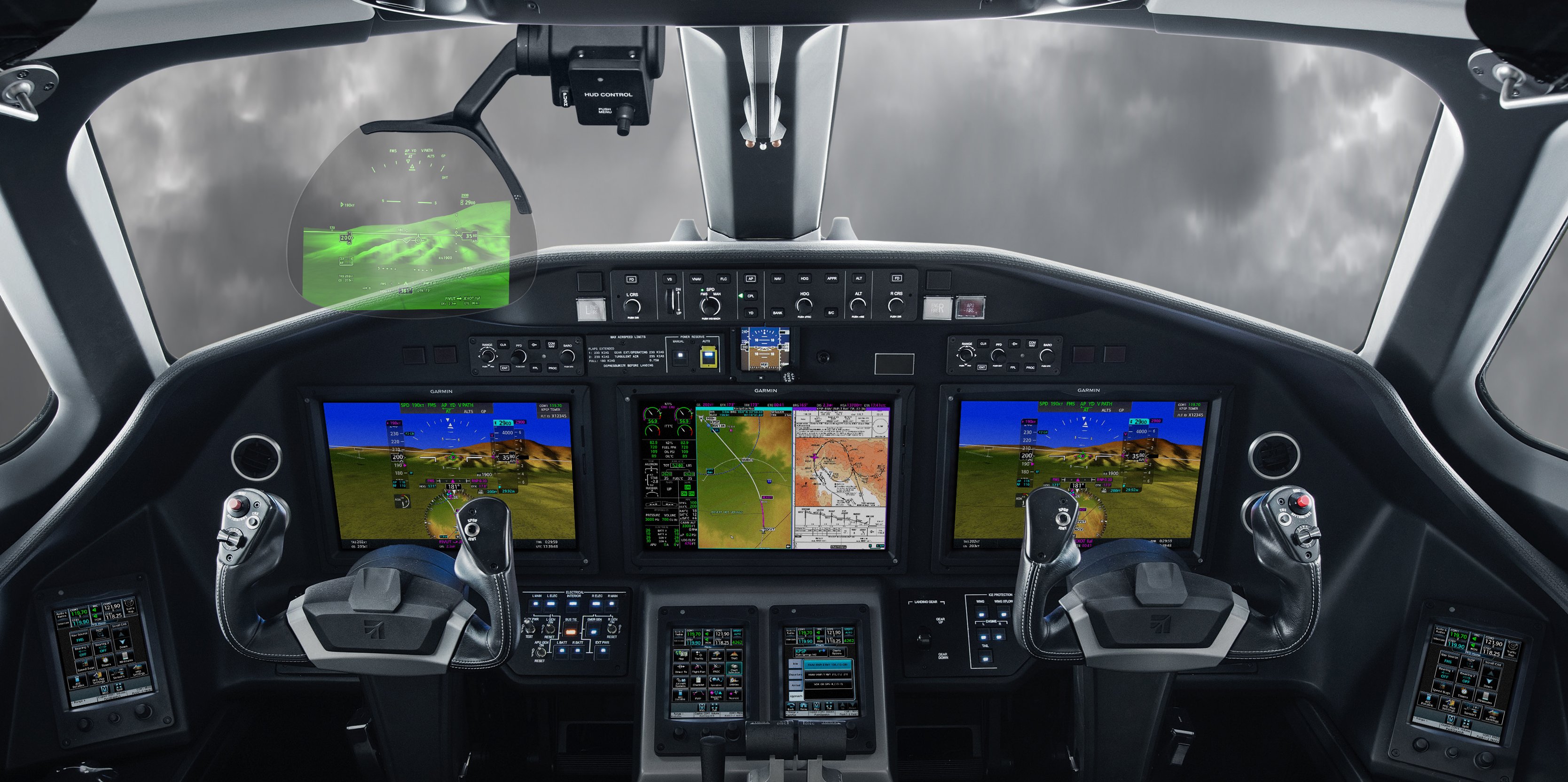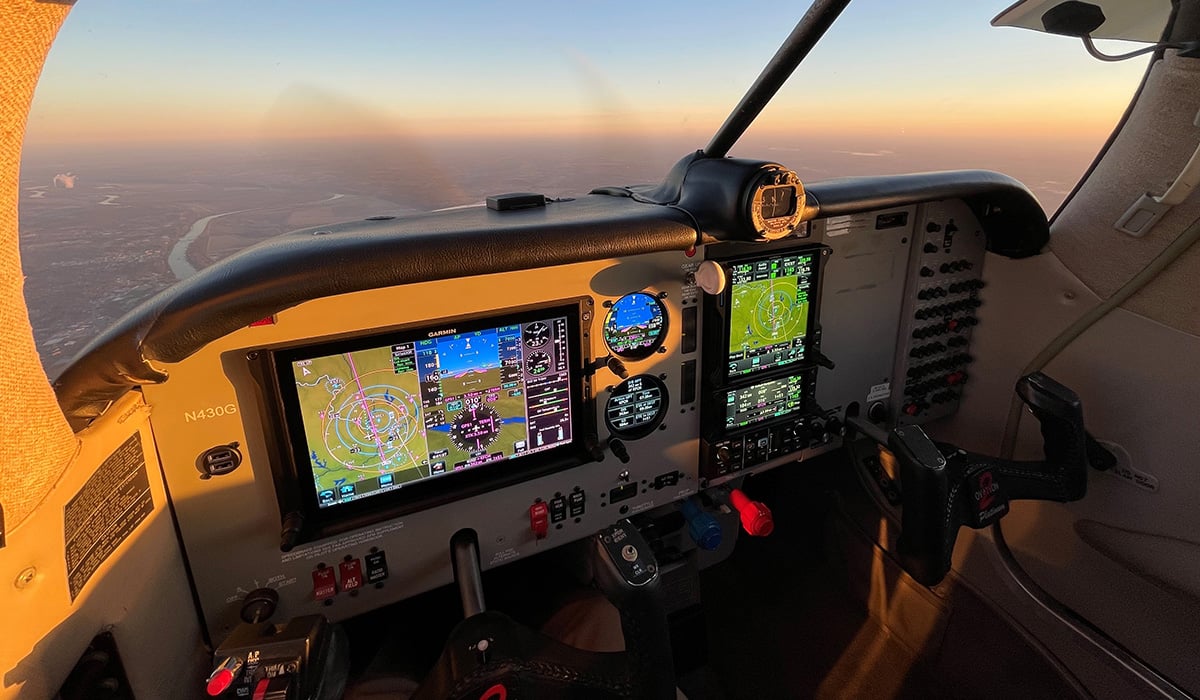
Garmin Head-Up Display Takes Flight on Cessna Citation Longitude
Our GHD 2100 Head-up Display for super-midsize business aircraft continues to make progress with flight testing and certification on the Cessna Citation Longitude in conjunction with the G5000 integrated flight deck. The GHD system incorporates modern optical design within a single display unit, projecting a crisp, clear view of pertinent flight information while also offering superior integration with Garmin integrated flight decks. Garmin will also feature a state-of-the- art, fully functional HUD at the Garmin exhibit (C12412) at the National Business Aviation Association Convention & Exhibition (NBAA-BACE) in Las Vegas, Nevada, October 10-12, 2017, which will allow customers to interact with and experience the GHD first-hand.
Throughout flight testing in the Citation Longitude, the GHD continues to progress in its own development and evaluation. Numerous instrument approaches in a variety of flight environments have been conducted during recent flight evaluations. Additionally, Garmin has completed a comprehensive evaluation in its own human factors flight simulation lab.
The GHD is a compact, self-contained projection system with a large 30-degree by 24-degree field-of- view. Driven by the Garmin integrated flight deck, the GHD projects a familiar presentation of critical flight information, symbology and more. Given its small, compact form factor, the GHD can easily be incorporated into a variety of business aircraft cockpits while also maintaining comfortable head clearance. The GHD incorporates intelligent dimming that automatically adapts to ambient light, delivering supreme clarity and brightness in all lighting conditions.
Because the GHD is highly integrated with the Garmin flight deck, consistent symbology is utilized between both systems so pilots experience a near-seamless transition when flying with the primary flight display (PFD) or with the GHD. In addition to displaying flight-critical PFD information, the GHD displays conformal attitude and flight path information overtop the real-world view, alongside navigation data, flight plan information, autopilot modes, master warning/caution annunciations and more. The GHD also offers a simplistic control interface and offers similarities in tactile operation in relation to the Garmin integrated flight deck.

Garmin GHD 2100 Head-up Display.
The Flight Path Marker within the GHD precisely displays where the aircraft is flying, taking into account crosswind, angle of attack and other factors that impact the dynamic position and heading of the aircraft. Coupled with a flight path-based flight director, the pilot can more easily establish desired aircraft flight path relative to the outside world. The Flight Path Marker includes additional features such as speed offset and velocity cue, allowing for precise energy management. The combination of the Flight Path Marker and flight path-based flight director allows pilots to more easily establish and maintain a stabilized approach to land.
Pilots are provided with an enhanced level of situational awareness with Synthetic Vision Technology (SVT), which presents a 3D depiction of terrain, traffic, obstacles, the runway environment and more within the GHD, supplementing the outside view with pertinent flight information. Also featured within the GHD, SurfaceWatchTM provides visual and aural cues to help prevent pilots from taking off and landing on a taxiway, on a runway that is too short or on the wrong runway based on performance data entered during preflight. For example, while on approach to land on a runway that is snow-covered or in an airport environment with reduced visibilities, SurfaceWatch highlights and outlines the pilot-selected runway on the GHD and on the PFD so it’s easier to identify.
The GHD is positioned to further expand its present capabilities. Future options such as integrating with external cameras, including Enhanced Vision Systems (EVS), provide significant improvements in situational awareness in fog and other low visibility situations. Future capabilities also include integration with a Combined Vision System (CVS), which blends EVS and SVT images to present pertinent levels of detail to the pilot, particularly during approach and landing.
The GHD also allows the operator to pursue Special Authorization Category I (CAT I), as well as Special Authorization Category II (CAT II) Instrument Landing System (ILS) approach minima.
Pilots can experience the GHD at our exhibit (C12412) at NBAA-BACE this week. The fully-functional GHD will allow customers to view and interact with the HUD first-hand as it’s flying a terrain-challenging instrument approach. For additional information contact [email protected].




